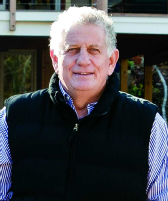Kenneth Green '71, Dawn Mulhern '92 & John Skowlund '89
Nesting Instinct
Kenneth Green '71

A thirty-five-year career in sustainable development, including a stint in the Peace Corps in Colombia and years of studying subsistence agriculture in Latin America and South Asia, taught Kenneth Green a thing or two about environmentally conscious building. In 2004, the former zoology major challenged himself to implement those lessons: he began designing a 2,500-square-foot, three-bedroom home with as many eco-friendly aspects as possible. Dubbed Green Nest, the $500,000 house on Maryland's Chesapeake Bay was completed in 2010 after three and a half years of construction.
Serving as Green Nest's primary architect and contractor posed a unique set of challenges. First off, he says, he had to contain the high costs of green building that deter many interested consumers. For instance, when he discovered that a solar-powered water heater would cost $50,000 and cover just 70 percent of his needs, he opted for a more cost-effective tankless system, which runs on propane. "If you have no monetary limit, you can do anything and everything," Green says. "But if you have financial limitations, you want to focus on big-ticket items like waste management, rainwater collection, and landscaping." Some of Green Nest's sustainable features include stormwater capture, water-saving faucets and toilets, and propane fireplaces instead of wood-burning ones, to improve energy efficiency and reduce emissions.
Another major challenge, he says, was wrangling with building codes and a confusing array of green standards and labels. Green—who has since founded a consulting firm that advises clients on sustainable residential construction—notes that the average consumer has no idea whether such standards exist for a given product, or which of the many green labels to trust. "The narrow concept of 'eco' or 'green' labeling is misleading," he says, "If you're building a new house, there are more than 2,000 components—nails, screws, bolts, wood, adhesives. There's no way anyone can look at all 2,000 and ask, 'Is there an eco label on this?' "
— Adrienne Zable '11
Natural Selection
Dawn Mulhern '92 & John Skowlund '89

When Dawn Mulhern was a child, one of her favorite places was the Discovery Room of the American Museum of Natural History in New York, where she could touch rocks, fossils, bones, and other specimens. Six years ago, Mulhern wanted to give her toddler son a similar experience at home; she shopped around for a commercial "discovery box" filled with natural objects, but couldn't find one. So she and her husband, John Skowlund, decided to make their own, giving it to their son for Christmas. "It's possible that I actually had more fun putting all the stuff in it than he had opening it," says Mulhern, an anthropologist who spent seven years working at the Smithsonian and now teaches at Fort Lewis College in Durango, Colorado.
The experience prompted the couple to start a home-based business, World Discovery Box; Mulhern and Skowlund say they now sell thousands of the boxes each year, largely via their website, www. worlddiscoverybox.com. Mulhern handles the conceptual and scientific aspects, while Skowlund, who has a marketing background, handles the business side.
Made of birch wood, the boxes—filled with rocks, fossils, shells, and other natural objects—are aimed at getting kids ages five to ten excited about science. They come in three sizes: a large set of drawers for $289, a medium set for $169, and a small slide-top box for $75. Each comes with a "starter set" of objects, but kids are encouraged to add their own. The boxes are also intended for use in schools; 50 percent are purchased for classrooms, where teachers can link their curricula to the objects. "The magic that happens with the discovery box is in the minds of the kids," says Skowlund. "It's not so much the box. It's the curiosity, the surprise."
— Natanya Auerbach '13


